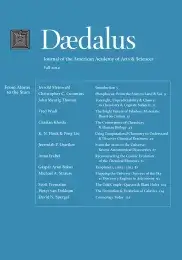The Bright Future of Fabulous Materials Based on Carbon
Our current civilization belongs to the organic materials age. Organic materials science pervades nearly all aspects of our daily life. This essay sketches the evolution of materials science up to the present day. Plastics as textiles and structural materials dominate human civilization. The element carbon is at the core of this development because of its diverse interconnections with itself and other elements of the periodic table. While silicon will not be supplanted from its role in electronics, carbon will provide the most versatile electronics applications, through inexpensive, flexible electronic devices.
Mr. McGuire: Ben, just one word.
Ben: Yes, sir?
Mr. McGuire: Are you listening?
Ben: Yes, I am.
Mr. McGuire: Plastics!
Ben: How do you mean?
Mr. McGuire: There is a great future in plastics, think about it.
–The Graduate (1967)
Mr. McGuire was right in his assessment. Plastics, or better yet, organic materials, contribute significantly to making our everyday lives exciting and productive. It is hard to imagine a world without plastics. Over the last several decades, organic materials have given us polyesters, polystyrene, formica, lightweight containers, fiberglass boats, airplanes that consume less fuel (thanks to lighter structural materials), fibers that are stronger, nylon, and much more recently, flat-screen displays with brilliant, vibrant colors. And organic materials are today leading us into a much less energy-intensive future, thanks to organic solar cells (“plastic solar cells”) and organic transistors.
How have we come so far so quickly: from unimaginable to reality in as little as sixty years? Let’s . . .
